- myFICO® Forums
- Types of Credit
- Credit Cards
- Re: Is CSP practical?
- Subscribe to RSS Feed
- Mark Topic as New
- Mark Topic as Read
- Float this Topic for Current User
- Bookmark
- Subscribe
- Mute
- Printer Friendly Page
Is CSP practical?
Is your credit card giving you the perks you want?
Browse credit cards from a variety of issuers to see if there's a better card for you.
- Mark as New
- Bookmark
- Subscribe
- Mute
- Subscribe to RSS Feed
- Permalink
- Report Inappropriate Content
Re: Is CSP practical?
@eagle2013 wrote:CSP is also the only card I'll have with an AF.
A little known tibit if you do some online shopping is the UR mall, which can give you additional UR points per dollar from various retailers. The best thing is that you don't have to use a Chase card in order to get the addtional points. I splurged and purchased a purse from Nordstrom that was already marked down on clearance. At that time, Chase UR mall was running a promotion for 8 points per $ on Nordstrom purchases. That one purchase netted me 2400 additional UR points which I value at least 1.25 cpp depending on where I want to transfer them too. The UR mall makes the CSP even more valuable to me!
This is a great perk I just learned of as well. Easy to rack up points through their UR Mall.
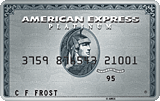
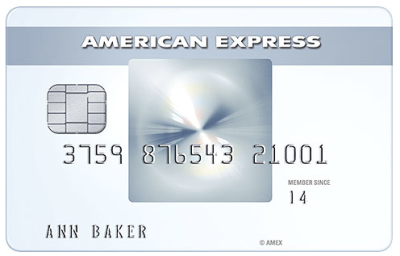
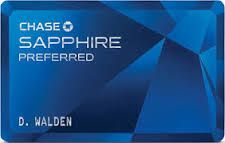

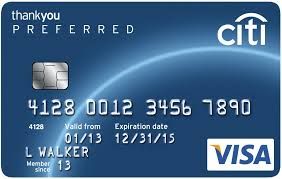
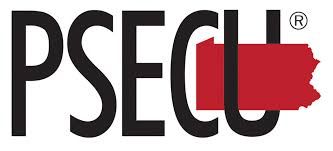
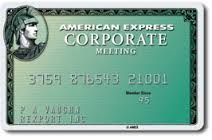
NPSL............... $20,700........... $15,200.......... $5,000............ $15,000............ $20,000
Current Scores: Equifax: 761 (Fico) TransUnion: 751 (Fico) Experian: 768 (Fico)
- Mark as New
- Bookmark
- Subscribe
- Mute
- Subscribe to RSS Feed
- Permalink
- Report Inappropriate Content
Re: Is CSP practical?
@jd352 wrote:
@eagle2013 wrote:CSP is also the only card I'll have with an AF.
A little known tibit if you do some online shopping is the UR mall, which can give you additional UR points per dollar from various retailers. The best thing is that you don't have to use a Chase card in order to get the addtional points. I splurged and purchased a purse from Nordstrom that was already marked down on clearance. At that time, Chase UR mall was running a promotion for 8 points per $ on Nordstrom purchases. That one purchase netted me 2400 additional UR points which I value at least 1.25 cpp depending on where I want to transfer them too. The UR mall makes the CSP even more valuable to me!
This is a great perk I just learned of as well. Easy to rack up points through their UR Mall.
Before using any mall, I suggest always using a site like http://www.cashbackmonitor.com/ You will often find malls with higher percentages than Chase. You then have to decide how to value URs compared to straight cash back, to decide which is the better choice.
- Mark as New
- Bookmark
- Subscribe
- Mute
- Subscribe to RSS Feed
- Permalink
- Report Inappropriate Content
Re: Is CSP practical?
@Reincarnated wrote:Hey all.
I was wondering, is CSP more of a prestigious card made of steel or do people actually get it for travelling?
I know it does give 20% off travel, BUT that's only when you have enough points to cover the cost. I would imagine that points would take a very long time to accrue, even wirth a Chase Freedom card, so wouldn't that only be let's say 1 vacation flight per year? PLUS you're going to have to pay $95 per year anyways.
The only way this card makes sense is to get it for the bonus points welcome bonus then get rid of it within a 2-3 year span so it's actually worth not paying the annual fee.
Am I totally wrong or is there something I'm not getting?
Let's do some math - as I find that that is the only way to see how practical a card is.
Let's say you spend $24,000 a year on the CSP, and $4,000 of that is travel and dining. You would end up getting 21,400 UR points for the regular spend ($20,000 * 1.07 UR/$) and then 8,560 UR points for the travel and dining spend ($4,000 * 2.14 UR/$) for a total of 29,960 UR points. If you are able to convert those UR points into miles and get $0.02 / UR then you just got yourself $599.20 worth of travel for free for the year - which is much more than the annual fee.
If you are able to combine this with a Freedom card you are able to rack up even more URs without having an additional annual fee, which gives you an even higher return. Now, this doesn't mean that this card is the best card for your spend, but the example above does beat out one of the best cash back cards on the market - the Amex Fidelity - which gives 2% across the board and has no annual fee ($24,000 * 0.02 means you would get $480 back in a year, which is less than the $599.20 - the $95 annual fee).
Redeeming the URs against travel in the UR portal means you are only getting $0.0125 per UR which is less than what you could get from a Quick Silver card (if we are not considering the bonused travel and dining spend). This means that for every person there is likely to be a different card or card combination that best fits that person's spend in order to maximize rewards. Throwing a blanket statement saying that a certain card is only worth the sign on bonus or that a certain card is best for every one will never be correct.
- Mark as New
- Bookmark
- Subscribe
- Mute
- Subscribe to RSS Feed
- Permalink
- Report Inappropriate Content
Re: Is CSP practical?
@nachoslibres wrote:
@Reincarnated wrote:Hey all.
I was wondering, is CSP more of a prestigious card made of steel or do people actually get it for travelling?
I know it does give 20% off travel, BUT that's only when you have enough points to cover the cost. I would imagine that points would take a very long time to accrue, even wirth a Chase Freedom card, so wouldn't that only be let's say 1 vacation flight per year? PLUS you're going to have to pay $95 per year anyways.
The only way this card makes sense is to get it for the bonus points welcome bonus then get rid of it within a 2-3 year span so it's actually worth not paying the annual fee.
Am I totally wrong or is there something I'm not getting?
Let's do some math - as I find that that is the only way to see how practical a card is.
Let's say you spend $24,000 a year on the CSP, and $4,000 of that is travel and dining. You would end up getting 21,400 UR points for the regular spend ($20,000 * 1.07 UR/$) and then 8,560 UR points for the travel and dining spend ($4,000 * 2.14 UR/$) for a total of 29,960 UR points. If you are able to convert those UR points into miles and get $0.02 / UR then you just got yourself $599.20 worth of travel for free for the year - which is much more than the annual fee.
If you are able to combine this with a Freedom card you are able to rack up even more URs without having an additional annual fee, which gives you an even higher return. Now, this doesn't mean that this card is the best card for your spend, but the example above does beat out one of the best cash back cards on the market - the Amex Fidelity - which gives 2% across the board and has no annual fee ($24,000 * 0.02 means you would get $480 back in a year, which is less than the $599.20 - the $95 annual fee).
Redeeming the URs against travel in the UR portal means you are only getting $0.0125 per UR which is less than what you could get from a Quick Silver card (if we are not considering the bonused travel and dining spend). This means that for every person there is likely to be a different card or card combination that best fits that person's spend in order to maximize rewards. Throwing a blanket statement saying that a certain card is only worth the sign on bonus or that a certain card is best for every one will never be correct.
Good analysis! One thing worth noting is how sensitive the "best" card calculation is. Fidelity Amex is only slightly worse in this example, and if you only get 1.8c per UR, then it is better. If more of the spend is on dining, or you get 2.1 c per UR, the CSP widens its lead etc. And of course, you never reallly know these figures ("How much will I spend this year, and what will my redemptions be?") in advance!
- Mark as New
- Bookmark
- Subscribe
- Mute
- Subscribe to RSS Feed
- Permalink
- Report Inappropriate Content
Re: Is CSP practical?
@hot4u wrote:
@bigblue7722 wrote:CSP is the only card I will ever have with an AF. Idk theres just something about it. Maybe because its heavy? I like being able to transfer the points from the freedom. It is my first visa sig card. I wouldnt pay like 175 for it like prg thats just crazy. 95 is still a little high but still worth it for me. I wish it was 2 points back on everything though. That would make it near unbeatable.
Don't forget you get your 7% Dividend on Points earned for the year.
i always forget about that! There is a debate on whether or not they are going to stop it though.
Card Ring $5000 Chase Marriott $5000,Chase Hyatt $5000, Sallie Mae Mastercard $4400, Paypal smart connect $4000,Chase Freedom $3200, Capital one Quicksliver visa $3000, Chase IHG Rewards $2300, Chase Southwest Premier $2000, Citi Double Cash $1500, AMEX BCE $1000
Last app July 22nd 2015- No apps for two years.
- Mark as New
- Bookmark
- Subscribe
- Mute
- Subscribe to RSS Feed
- Permalink
- Report Inappropriate Content
Re: Is CSP practical?
@nachoslibres wrote:
@Reincarnated wrote:Hey all.
I was wondering, is CSP more of a prestigious card made of steel or do people actually get it for travelling?
I know it does give 20% off travel, BUT that's only when you have enough points to cover the cost. I would imagine that points would take a very long time to accrue, even wirth a Chase Freedom card, so wouldn't that only be let's say 1 vacation flight per year? PLUS you're going to have to pay $95 per year anyways.
The only way this card makes sense is to get it for the bonus points welcome bonus then get rid of it within a 2-3 year span so it's actually worth not paying the annual fee.
Am I totally wrong or is there something I'm not getting?
Let's do some math - as I find that that is the only way to see how practical a card is.
Let's say you spend $24,000 a year on the CSP, and $4,000 of that is travel and dining. You would end up getting 21,400 UR points for the regular spend ($20,000 * 1.07 UR/$) and then 8,560 UR points for the travel and dining spend ($4,000 * 2.14 UR/$) for a total of 29,960 UR points. If you are able to convert those UR points into miles and get $0.02 / UR then you just got yourself $599.20 worth of travel for free for the year - which is much more than the annual fee.
If you are able to combine this with a Freedom card you are able to rack up even more URs without having an additional annual fee, which gives you an even higher return. Now, this doesn't mean that this card is the best card for your spend, but the example above does beat out one of the best cash back cards on the market - the Amex Fidelity - which gives 2% across the board and has no annual fee ($24,000 * 0.02 means you would get $480 back in a year, which is less than the $599.20 - the $95 annual fee).
Redeeming the URs against travel in the UR portal means you are only getting $0.0125 per UR which is less than what you could get from a Quick Silver card (if we are not considering the bonused travel and dining spend). This means that for every person there is likely to be a different card or card combination that best fits that person's spend in order to maximize rewards. Throwing a blanket statement saying that a certain card is only worth the sign on bonus or that a certain card is best for every one will never be correct.
i would be very careful to assume 2cpp on UR redemptions. It just isn't that realistic even for good value travel partners (United, Avios, Amtrak,Hyatt). At best, you can conservatively estimate a UR value of 1.25 - 1.50 cpp. When choosing the CSP you have to see if the travel partners suit your needs more than if your spending justifies the AF.
- Mark as New
- Bookmark
- Subscribe
- Mute
- Subscribe to RSS Feed
- Permalink
- Report Inappropriate Content
Re: Is CSP practical?
@mongstradamus wrote:There is also transfer partners that is what biggest advantage of csp, where it is something like 2 points per cent
Isnt it the reverse? 2 cents for 1 point? no expert here, but just clarifying.
In a committed relationship with Chase from 12/2012.
Age: 26, Income: $59,240/-, Current score: TU from CK: 750/A (12/24/14), TU Vantage score from CK: 775/C (12/24/14), Experian from Creditsesame: 717, Equifax from myfico: 724, Overall Util: 1% (12/24/14), Total credit limits: $62,150, In the garden from 12/19/2014, AAoA : 7 months, Oldest account: 8 months, Newest account: 1 week, HP: 18.
- Mark as New
- Bookmark
- Subscribe
- Mute
- Subscribe to RSS Feed
- Permalink
- Report Inappropriate Content
Re: Is CSP practical?
@Chaselover wrote:
@mongstradamus wrote:There is also transfer partners that is what biggest advantage of csp, where it is something like 2 points per cent
Isnt it the reverse? 2 cents for 1 point? no expert here, but just clarifying.
Yes, you want to get more than 1 cent per point. 2 points per cent with an AF would not be a good card!
- Mark as New
- Bookmark
- Subscribe
- Mute
- Subscribe to RSS Feed
- Permalink
- Report Inappropriate Content
Re: Is CSP practical?
@eagle2013 wrote:
@nachoslibres wrote:
@Reincarnated wrote:Hey all.
I was wondering, is CSP more of a prestigious card made of steel or do people actually get it for travelling?
I know it does give 20% off travel, BUT that's only when you have enough points to cover the cost. I would imagine that points would take a very long time to accrue, even wirth a Chase Freedom card, so wouldn't that only be let's say 1 vacation flight per year? PLUS you're going to have to pay $95 per year anyways.
The only way this card makes sense is to get it for the bonus points welcome bonus then get rid of it within a 2-3 year span so it's actually worth not paying the annual fee.
Am I totally wrong or is there something I'm not getting?
Let's do some math - as I find that that is the only way to see how practical a card is.
Let's say you spend $24,000 a year on the CSP, and $4,000 of that is travel and dining. You would end up getting 21,400 UR points for the regular spend ($20,000 * 1.07 UR/$) and then 8,560 UR points for the travel and dining spend ($4,000 * 2.14 UR/$) for a total of 29,960 UR points. If you are able to convert those UR points into miles and get $0.02 / UR then you just got yourself $599.20 worth of travel for free for the year - which is much more than the annual fee.
If you are able to combine this with a Freedom card you are able to rack up even more URs without having an additional annual fee, which gives you an even higher return. Now, this doesn't mean that this card is the best card for your spend, but the example above does beat out one of the best cash back cards on the market - the Amex Fidelity - which gives 2% across the board and has no annual fee ($24,000 * 0.02 means you would get $480 back in a year, which is less than the $599.20 - the $95 annual fee).
Redeeming the URs against travel in the UR portal means you are only getting $0.0125 per UR which is less than what you could get from a Quick Silver card (if we are not considering the bonused travel and dining spend). This means that for every person there is likely to be a different card or card combination that best fits that person's spend in order to maximize rewards. Throwing a blanket statement saying that a certain card is only worth the sign on bonus or that a certain card is best for every one will never be correct.
i would be very careful to assume 2cpp on UR redemptions. It just isn't that realistic even for good value travel partners (United, Avios, Amtrak,Hyatt). At best, you can conservatively estimate a UR value of 1.25 - 1.50 cpp. When choosing the CSP you have to see if the travel partners suit your needs more than if your spending justifies the AF.
You can definitely get $0.02 / UR. If you aren't, then you aren't getting the best deal. Any of the flights I have priced (i.e. from where I live to London) yield a little over $0.02/UR - and this is economy class - if you were to do business or first you would get a lot more than $0.02/UR. I've had the same thing with any of the Hyatt stays I have priced. Yes, if you transfer to someone like Marriott you will see a much lower rate (probably around $0.01/UR), but if all you can get is $0.0125-$0.015/UR then this card is a lot less valuable.
- Mark as New
- Bookmark
- Subscribe
- Mute
- Subscribe to RSS Feed
- Permalink
- Report Inappropriate Content
Re: Is CSP practical?
EQ FICO - 753
TU FICO - 755
EX FICO(AMEX) - 766